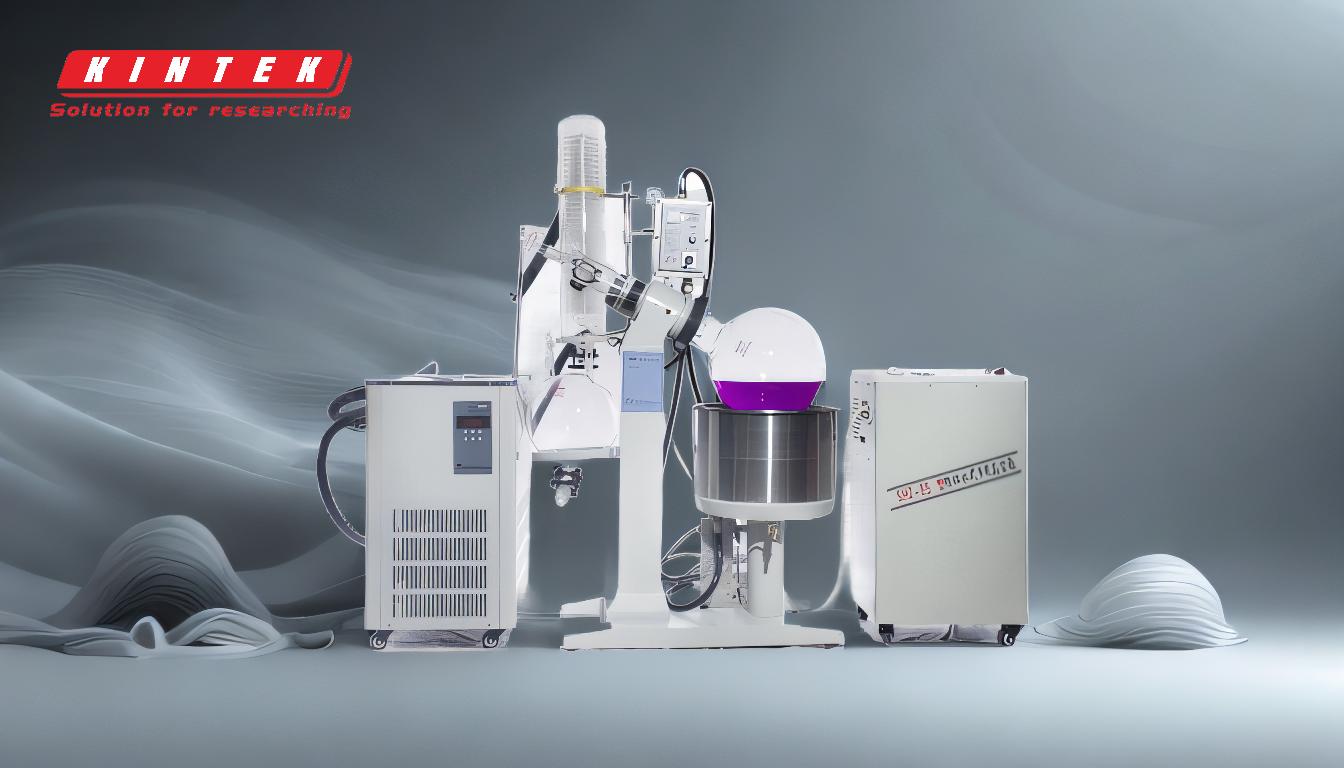The condenser in a rotary evaporator plays a critical role in the evaporation process by cooling and converting solvent vapors back into a liquid state. This allows the solvent to be collected for reuse or disposal, ensuring efficient recovery and preventing environmental contamination. The condenser typically consists of a coiled glass tube surrounded by a water-cooled jacket, which facilitates the cooling process. By trapping and liquefying the evaporated solvent, the condenser enhances the overall efficiency of the rotary evaporator and ensures the safe handling of solvents.
Key Points Explained:

-
Cooling and Condensing Solvent Vapors:
- The primary function of the condenser is to cool the solvent vapors generated during the evaporation process. This cooling converts the vapors back into a liquid state, making it easier to collect and handle.
- The condenser typically uses a water-cooled jacket or similar cooling mechanism to achieve this transformation efficiently.
-
Collection of Condensed Solvent:
- Once the solvent vapors are condensed into a liquid, they are collected in a separate receiving flask. This allows for easy recovery of the solvent, which can then be reused or disposed of as needed.
- The collection process ensures that the solvent does not escape into the environment, promoting safety and environmental responsibility.
-
Enhancing Efficiency of the Evaporation Process:
- By converting vapors back into a liquid, the condenser helps maintain a continuous and efficient evaporation process. This is particularly important in applications where large volumes of solvent need to be removed.
- The efficient recovery of solvents also reduces waste and lowers operational costs.
-
Preventing Environmental Contamination:
- The condenser traps the solvent vapors, preventing them from being released into the atmosphere. This is crucial for maintaining a safe working environment and complying with environmental regulations.
- By ensuring that solvents are properly contained and collected, the condenser minimizes the risk of contamination and exposure.
-
Structural Design of the Condenser:
- The condenser is typically designed as a coiled glass tube surrounded by a water-cooled jacket. This design maximizes the surface area available for cooling, ensuring that the vapors are effectively condensed.
- The use of glass in the condenser allows for easy observation of the condensation process and ensures compatibility with a wide range of solvents.
-
Role in Solvent Recovery:
- The condenser is essential for the recovery of solvents, which can then be reused in subsequent experiments or processes. This not only conserves resources but also reduces the need for purchasing new solvents.
- The ability to recover solvents efficiently is a key advantage of using a rotary evaporator in laboratory settings.
-
Separation of Distillate from Sample:
- The condenser plays a crucial role in separating the distillate (condensed solvent) from the original sample. This separation is vital for processes such as purification, concentration, and solvent removal.
- By ensuring that the distillate is collected separately, the condenser helps achieve the desired outcomes in various laboratory applications.
In summary, the condenser in a rotary evaporator is a vital component that ensures the efficient and safe recovery of solvents. Its ability to cool and condense vapors, combined with its structural design, makes it indispensable for a wide range of laboratory processes.
Summary Table:
| Function | Description |
|---|---|
| Cooling and Condensing Vapors | Converts solvent vapors into liquid for easy collection. |
| Collection of Condensed Solvent | Collects solvent in a receiving flask for reuse or disposal. |
| Enhances Evaporation Efficiency | Maintains a continuous and efficient evaporation process. |
| Prevents Environmental Contamination | Traps vapors to avoid atmospheric release, ensuring safety and compliance. |
| Structural Design | Coiled glass tube with a water-cooled jacket for effective cooling. |
| Solvent Recovery | Enables reuse of solvents, reducing waste and costs. |
| Separation of Distillate | Separates condensed solvent from the original sample for purification. |
Optimize your lab's solvent recovery process—contact us today to learn more about rotary evaporators!









